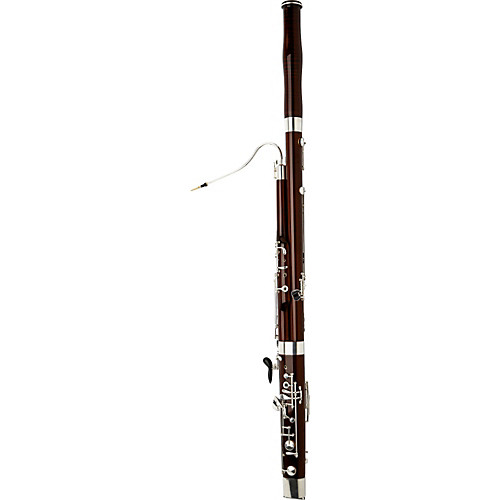“I also always carry my flute. It’s very important for me to try to relax when I’m traveling, and playing my flute helps me to unwind”
Flute
The flute is a family of musical instruments in the woodwind group. Unlike woodwind instruments with reeds, a flute is an aerophone or reedless wind instrument that produces its sound from the flow of air across an opening. According to the instrument classification of Hornbostel–Sachs, flutes are categorized as edge-blown aerophones. A musician who plays the flute can be referred to as a flute player, flautist, flutist or, less commonly, fluter or flutenist.
“The clarinet has always been my baby. I just didn’t know that for a while”
Clarinet
The clarinet is a musical-instrument family belonging to the group known as the woodwind instruments. It has a single-reed mouthpiece, a straight, cylindrical tube with an almost cylindrical bore, and a flared bell. During the Late Baroque era, composers such as Bach and Handel were making new demands on the skills of their trumpeters, who were often required to play difficult melodic passages in the high, or as it came to be called, clarion register. Since the trumpets of this time had no valves or pistons, melodic passages would often require the use of the highest part of the trumpet's range, where the harmonics were close enough together to produce scales of adjacent notes as opposed to the gapped scales or arpeggios of the lower register.
“The oboe sounds like a clarinet with a cold”
Oboe
Oboes belong to the classification of double reed woodwind instruments. Oboes are usually made of wood, but there are also oboes made of synthetic materials. The most common oboe plays in the treble or soprano range. A soprano oboe measures roughly 65 cm (25 1⁄2 in) long, with metal keys, a conical bore and a flared bell. Sound is produced by blowing into the reed at a sufficient air pressure, causing it to vibrate with the air column. The distinctive tone is versatile and has been described as "bright". When the word oboe is used alone, it is generally taken to mean the treble instrument rather than other instruments of the family, such as the bass oboe, the cor anglais (English horn), or oboe d'amore
“The bassoon is one of my favorite instruments. It has a medieval aroma, like the days when everything used to sound like that. Some people crave baseball...I find this unfathomable, but I can easily understand why a person could get excited about playing the bassoon”
Bassoon
The bassoon is a woodwind instrument in the double reed family that plays music written in the bass and tenor clefs, and occasionally the treble. Appearing in its modern form in the 19th century, the bassoon figures prominently in orchestral, concert band, and chamber music literature. It is known for its distinctive tone colour, wide range, variety of character, and agility.
“Life is something like a trumpet. If you don’t put anything in, you won’t get anything out”
Trumpet
A trumpet is a brass instrument commonly used in classical and jazz ensembles. The trumpet group contains the instruments with the highest register in the brass family. Trumpet-like instruments have historically been used as signaling devices in battle or hunting, with examples dating back to at least 1500 BC; they began to be used as musical instruments only in the late 14th or early 15th century.[1] Trumpets are used in art music styles, for instance in orchestras, concert bands, and jazz ensembles, as well as in popular music. They are played by blowing air through nearly-closed lips (called the player's embouchure), producing a "buzzing" sound that starts a standing wave vibration in the air column inside the instrument. Since the late 15th century they have primarily been constructed of brass tubing, usually bent twice into a rounded rectangular shape.
“The tuba is certainly the most intestinal of instruments, the very lower bowel of music”
Tuba
The tuba is the largest and lowest-pitched musical instrument in the brass family. As with all brass instruments, the sound is produced by lip vibration into a large mouthpiece. It first appeared in the mid-19th century, making it one of the newer instruments in the modern orchestra and concert band. The tuba largely replaced the ophicleide.
“I love the French horn”
French horn
“If you like an instrument that sings, play the saxophone. At its best it’s like the human voice”
Saxophone
The saxophone is a family of woodwind instruments. Saxophones are usually made of brass and played with a single-reed mouthpiece similar to that of the clarinet. When the player presses a key, a pad either covers a hole or lifts off a hole, lowering or raising the pitch, respectively.
The saxophone family was invented by the Belgian instrument maker Adolphe Sax in 1840. Adolphe Sax wanted to create a group or series of instruments that would be the most powerful and vocal of the woodwinds, and the most adaptive of the brass instruments, that would fill the vacant middle ground between the two sections. Sax patented the saxophone on June 28, 1846, in two groups of seven instruments each. Each series consisted of instruments of various sizes in alternating transposition. The series pitched in B♭ and E♭, designed for military bands, have proved popular and most saxophones encountered today are from this series. Instruments from the so-called "orchestral" series, pitched in C and F, never gained a foothold, and the B♭ and E♭ instruments have now replaced the C and F instruments when the saxophone is used in an orchestra.









